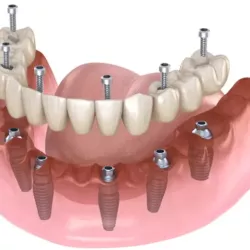4 Best Grass Alternatives and Their Benefits
Lawns are the prized jewel in many properties. Besides helping clean the air, traditional turfs serve as natural carpets for property landscapes. They also comprise most of the green space in both residential and commercial properties.
But these benefits come with certain costs. From fuel for mowers to fertilizers, pesticides, and irrigation, turf grasses need a lot of things to stay healthy.
Fortunately, there are several substitutes that lawn care professionals in Springfield, Missouri recommend. Below are four of the best grass alternatives and the reasons why you should consider them for your yard:
1. Ornamental Grasses
Believe it or not, there many other kinds of grass you can use in your landscape than traditional turf grasses. In fact, one of the best ways to reduce your lawn space (and accompanying costs) is to transform a portion into an ornamental grass display.
As drought-resistant lawn alternatives, ornamental grasses need much lower maintenance than lawn grass. They also thrive in almost any soil and require very little fertilizing (if at all). They are also resistant to both pests and diseases, which is equivalent to lower costs.
Besides these, you can also tuck away your old lawn mower with these grasses because they don’t need tending the same way as traditional turf grass. They look their best when they grow into distinctive shapes, such as sprays, tufts, and shimmering sweeps. The best part is that they can hold their shape and remain upright and appealing even in the winter.
You also don’t need to worry so much about keeping them within a specific area as they don’t spread horizontally as traditional grasses do. Plus, most ornamental grasses grow in clumps, which means they don’t spread through rhizomes and rely on seeds for reproduction.
2. Groundcovers
If you want a grass alternative that actually spreads throughout the lawn, groundcovers are perfect for you.
Unlike ornamental grasses, this type of plant sprawls throughout the soil without growing very tall so that you can use them as replacements for turf grass for your lawn. Plus, this category includes low maintenance plants that smother weeds and fill in gaps in pathways.
Of course, certain groundcover fares better than others, depending on your landscape’s climate and layout.
For sunny and bright areas, you can choose among groundcovers like Japanese sweet flag, barberry cotoneaster, creeping jenny, and Asian star jasmine. Creeping herbs like oregano and thyme also work. You can also pick drought-tolerant stonecrop succulents or lantana, especially if you live in a place with a dry climate.
Meanwhile, perennial groundcovers like lily-of-the-valley and sweet woodruff can thrive and grow into thick canopies of flowers and leaves in shady areas. These shade-loving plants only need very low moisture, helping you save on water bills.
Below are some more groundcovers you can try for your landscape:
Clover
If you’re after ease of maintenance in your lawn, clover is an excellent choice for you.
Apart from having the same lush greenery as traditional turf grass, clovers also offer other eco-friendly benefits. It is used to fix nitrogen issues in the soil, suppresses weeds, and promotes aeration, not to mention enriches the earth.
After planting, clovers need to be watered twice a day. You can cut back on the watering as they require little to no watering once they’re settled. Clovers also provide green groundcover all-year-round and won’t require mowing or fertilization.
You can use several kinds of clover, but Dutch white varieties are the most popular choice for lawns. If you want a wild pasture look, you can opt for red and yellow blossom varieties that grow up to three feet and add a pop of color to the landscape.
Creeping Charlie
Although it is thought of as one of the most frustrating weeds, creeping Charlie can serve as an excellent grass alternative to add a living green carpet into your yard.
While it does spread like crazy, this mint family member with rounded leaves and tiny blossoms is a low-maintenance groundcover that thrives in partially shady parts of a landscape. You can simply plant it in a bed, leave it alone, and watch it thrive. It also gives off a lovely minty smell all over the property.
The best part is that it can handle a good amount of foot traffic and activity from children and pets. Because of this, it is deemed as hardy as traditional turf grass.
3. Moss
Another easy and low maintenance turf grass alternative is moss. From planting to care and maintenance, everything about a moss bed is effortless. When placed in a shady spot, moss doesn’t even need to be watered.
Like groundcover and ornamental grasses, moss doesn’t need mowing. This is because it stays quite low throughout its lifespan and only grows to about one inch tall, depending on the species.
Moss is also quite hardy and can retain its shape with occasional foot traffic. It also needs little to no watering at all. What is quite unique about it is the visual interest it provides, making it a favored alternative by landscaping professionals in Springfield, Missouri.
4. Flower Beds
Flowers provide more than enough beauty to a landscape that you won’t even notice the absence of grass. While it may not be the first choice in replacing a grassy lawn, they do reduce the amount of space that needs to be covered with grass.
To create a wonderful flower bed, pick out perennials that are native to your area. This way, you’ll spend less on their fertilization and maintenance since native plants are already well-adapted to the area.
When designing a flower bed, it’s best to keep it simple by choosing a few varieties. This way, you can reduce the number of individual plants with different needs you need to keep track of.
Flower beds are great for adding a pop of color to a green space. You can even add a bit more texture and height to your landscape with taller plants.
It is also an excellent solution for sloped and other areas that your mower cannot reach. Simply plant flowering plants in these small spaces or create terraced beds, and you’ll find the area covered in no time.
Beautify Your Green Space
Grasses are the most common choice for lawns because they are hardy and easy to care for. Still, this doesn’t mean grasses are your only option for creating a lovely landscape. Try the alternatives listed in this article for a more beautiful green space.
More to Read:
Previous Posts:


